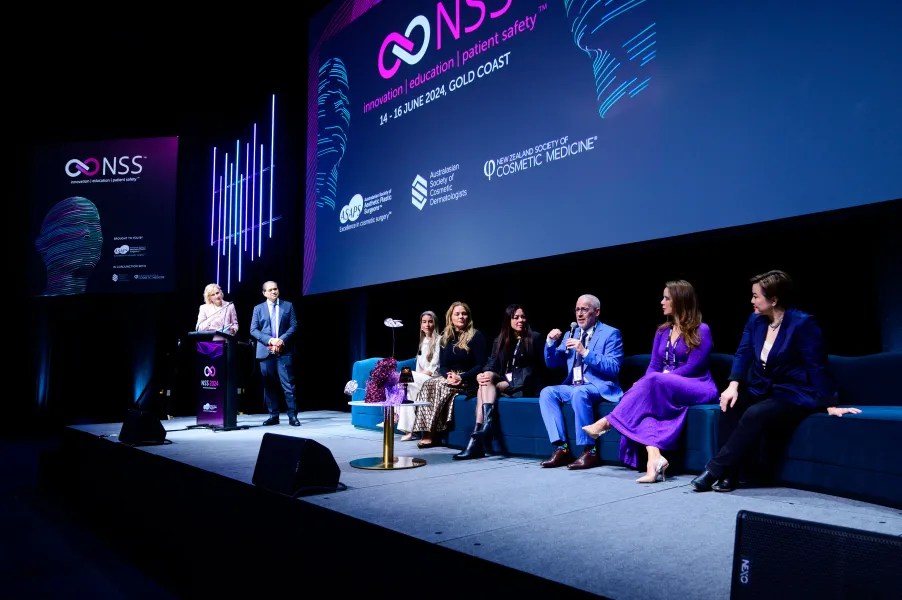5 Key Takeaways from the Non-Surgical Symposium 2024

The recent Non-Surgical Symposium (NSS) held on the Gold Coast in June was a resounding success, gathering over 1,200 attendees across the aesthetics industry. With the dust now settled, we tapped one of New Zealand’s leading cosmetic doctors and founder of The Face Place, Dr Cat Stone, for a few of her key takeaways from this year’s symposium.

A highlight of the NSS was EmFace Submentum, a new applicator that stimulates the digastric muscles to tighten the neck. Unlike the cheek applicator which avoids temperatures above 42 degrees to prevent fat necrosis, the submental applicator heats up to 44-45 degrees to induce controlled fat cell death, resulting in up to a 30% reduction in submental fat after four sessions.
Dr Lina Vargas delved deeper into BTL Aesthetics’ Exion RF treatment, showcasing its ability to elevate hyaluronic acid (HA) levels in the skin. HA is important not only for hydration and plumpness, but also serves as an interface between collagen and elastin fibres. Exion RF is a breakthrough in microneedling, which leverages simultaneous radio frequency and targeted ultrasound to improve skin quality, texture, and hydration.
Impressive studies have shown:
- 224% increase in hyaluronic acid
- 47% increase in collagen
- 50% increase in elastin
- 94.4% improved skin quality
- 41% improved skin texture
Dr Eyal Kramer showcased the next generation of Profhilo, Structura, which will launch at the annual NZSCM Conference in August. The regenerative skin treatment targets deeper structural changes in facial skin. As we age, adipose progenitor and stem cells (APSC) stop developing leading to the accumulation of senescent cells, resulting in increased inflammation, reduced HA, elastin and collagen. Structura is anti-inflammatory and stimulates the APSC to regenerate HA, elastin and collagen. It has a high compatibility with adipose (fat) tissue and improves adipose viability, changing the way that fat cells behave. It can also improve wound healing as it’s anti-inflammatory.
Topical insulin, highlighted by Mike Clague, emerged as a beneficial tool for skin rejuvenation, particularly in conjunction with needling. By boosting collagen synthesis and maturation, he found insulin aided in improving various skin issues like wrinkles, acne scars, sun damage, and stretch marks.
Dr Daria Voropai shed light on the concept of perception drift in lip filler treatments, emphasising the importance of maintaining realistic beauty standards as a cosmetic injector. With increased exposure to overfilled lips and cheeks on social media, both patients and clinicians may develop unrealistic expectations, highlighting the need for self-awareness and ethical practice. “I have personally had to consciously reset myself after coming home from some conferences and questioning if I was ‘too natural’ in my treatments due to overexposure to more ‘done’ techniques,” says Dr Cat.
The theme of this year’s NSS was ‘Ethical and Evidence-based Good Practice’, with most presentations referencing the ‘elephant in the room’, the new AHPRA and TGA advertising guidelines that have clearly caused a lot of confusion among practitioners. While the compliance and advertising regulations are different for New Zealand, Dr Cat said it was still interesting to understand the restrictions. For instance, in Australia advertising cosmetic injectables is not allowed as it’s a Schedule 4 medication.
